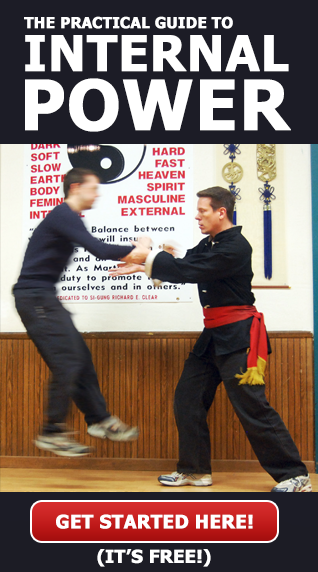Nei Jia (Internal arts) are generally considered to be different than external arts. In this post I would like to suggest some of the reasons for how and why.
When Tai Chi masters are grading a Tai Chi practitioner’s set the first thing they look at is what can be physically seen. This includes such things as is the form / set correct and how is the posture and flow between postures and how / what is the expression of the individuals Tai Chi.
When this is correct and it is obvious that the practitioner is not a beginner then the very next thing that is evaluated and looked at are the internal aspects usually stated as “are they internal”. To someone who has not heard this before it obviously begs the question, “what is internal?”.
I have heard many different explanations of what makes an internal art. These range from as simple as external arts (wai jia) referring to arts that came from the outside of China and nei jia originating inside of China to how the external arts are about physical force and the internal arts are secret mystical mumbo jumbo.
After many years of study, practice and research as well as hundreds of conversations with senior masters about this topic I have come to my own conclusions regarding the topic.
Internal refers to what is going on inside the person.
Following is a partial list of the criteria that is used to determine and evaluate internal.
- What is the mind state of the practitioner?
- How is the practitioner breathing?
- How relaxed is the practitioner?
- Is the root sunk and the head floating?
- What is the movement inside of the practitioner?
- What is the sensitivity of the practitioner to the inside of their body?
- How are the internal connections of the practitioner? This includes such things as:
- Internal Connection pathways through the body. Ideally this is an unbroken flow of the line of force from the foot through the expression point which changes constantly but is intelligent and directed.
- Is the body movement and action one piece or a collection of parts?
- Is the upper and lower body connected and coordinated?
Hopefully this list will help to stimulate conversation and questions and be a good beginning point for anyone seeking to understand the internal. This list is not comprehensive and I will be adding more posts regarding the internal in the near future.
One more item for thought. An external art may have some internal aspects to it but will tend to focus on fighting and strategy and external drills etc with very little or no focus on the internal.
Internal arts tend to do only the amount of external movement necessary to have a vehicle to practice the internal and are looking to really enhance and improve the internal aspects of practice which will then improve and enhance the rest of the art including the external trappings of the art(s).

Speak Your Mind